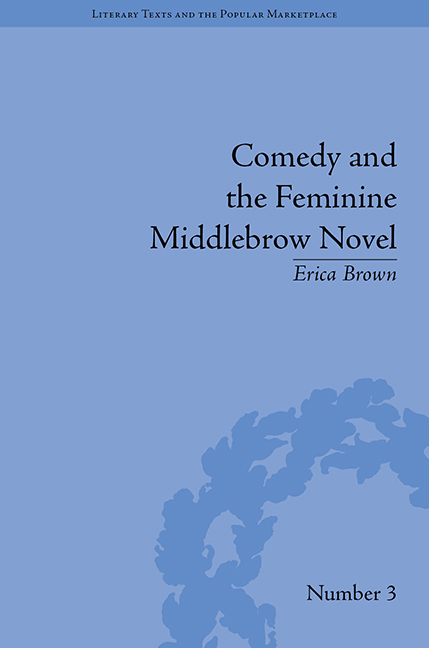Book contents
- Frontmatter
- CONTENTS
- Acknowledgements
- Introduction
- 1 The Middlebrow and Comedy: Elizabeth Taylor and Elizabeth von Arnim's Cultural and Literary Context
- 2 A Comedic ‘Response’ to War? Elizabeth von Arnim's Christopher and Columbus (1919) and Mr Skeffington (1940), and Elizabeth Taylor's At Mrs Lippincote's (1945)
- 3 ‘One Begins to See what is Meant by “They Lived Happily Ever After”’: Elizabeth von Arnim's Vera (1921) and Elizabeth Taylor's Palladian (1946)
- 4 ‘One Shudders to Think what a Less Sophisticated Artist would have Made of It’: The Comedy of Age in Elizabeth von Arnim's Love (1925) and Elizabeth Taylor's In a Summer Season (1961)
- Conclusion
- Notes
- Works Cited
- Index
3 - ‘One Begins to See what is Meant by “They Lived Happily Ever After”’: Elizabeth von Arnim's Vera (1921) and Elizabeth Taylor's Palladian (1946)
- Frontmatter
- CONTENTS
- Acknowledgements
- Introduction
- 1 The Middlebrow and Comedy: Elizabeth Taylor and Elizabeth von Arnim's Cultural and Literary Context
- 2 A Comedic ‘Response’ to War? Elizabeth von Arnim's Christopher and Columbus (1919) and Mr Skeffington (1940), and Elizabeth Taylor's At Mrs Lippincote's (1945)
- 3 ‘One Begins to See what is Meant by “They Lived Happily Ever After”’: Elizabeth von Arnim's Vera (1921) and Elizabeth Taylor's Palladian (1946)
- 4 ‘One Shudders to Think what a Less Sophisticated Artist would have Made of It’: The Comedy of Age in Elizabeth von Arnim's Love (1925) and Elizabeth Taylor's In a Summer Season (1961)
- Conclusion
- Notes
- Works Cited
- Index
Summary
The opening scenarios of Vera and Palladian are strikingly similar: both begin with the death of a father (the mother having died some years before), leaving an orphaned young heroine isolated and vulnerable as she sets out into adult life. That this adult life will involve marriage is presented as inevitable, and in this sense both novels follow the structure of a traditional romance.
Both orphaned young heroines meet an older man with a mysterious first wife, immediately recalling Charlotte Brontë's Jane Eyre (1847). In revisiting this novel, von Arnim and Taylor were part of a wave of interest in the Brontës among inter-war women writers. Patsy Stoneman identifies Vera as ‘the first link in a chain of Jane Eyre derivatives including Rebecca (1938) and Elizabeth Taylor's Palladian (1946)’. However, neither Vera nor Palladian is a simple rehearsal of the Victorian narrative; both have a darker purpose. Jane Eyre ends with the joyful marriage, while Vera is concerned with ‘what is meant by “they lived happily ever after”’. Von Arnim takes the fairy tale, and the nineteenth-century narratives that built on this traditional romance plot, and asks, what happens after the marriage? Palladian similarly explores the imperatives of the Jane Eyre narrative, creating a complex, self-conscious reflection on the consequences of reading this ‘classic fiction’. Palladian will end with the marriage, but in neither of these novels will the heroine live ‘happily ever after’.
- Type
- Chapter
- Information
- Comedy and the Feminine Middlebrow NovelElizabeth von Arnim and Elizabeth Taylor, pp. 65 - 88Publisher: Pickering & ChattoFirst published in: 2014



